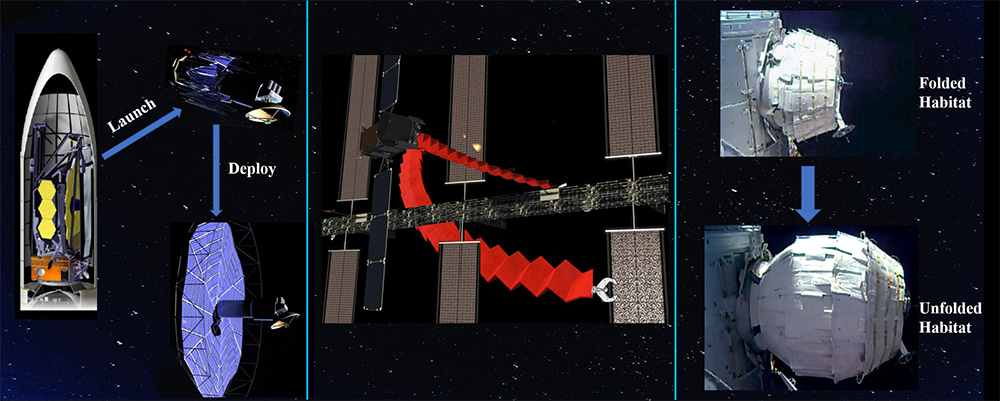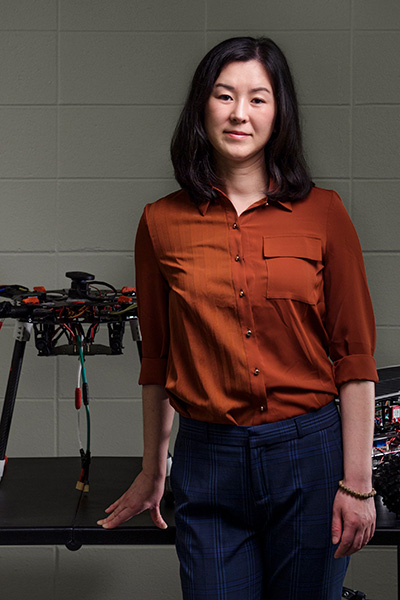Purdue leads multi-university collaboration to study origami-inspired transformable systems for space operations

The ancient art of folding paper into complex shapes is inspiring new ways to deploy instruments in space. Applying research on origami-inspired transformable systems could avoid dangerous and costly spacewalks taken by astronauts for out-of-spacecraft operations.

Thanks to a $1 million grant from the National Science Foundation (NSF), researchers at Purdue are leading a multi-university effort to automate the unfolding and re-folding of spacecraft components like solar panels and sails, temporary habitats, and even robotic arms.
“There are unfolding mechanisms for one-time solar panels deployment after launch. But multiple-time automatic folding and unfolding on board have not been realized,” says Purdue Associate Professor Ran Dai. “For example, we may fold large solar panels under the risk of damage from space debris, and redeploy them after the risk has passed.”
Dai is the principal investigator on this collaborative proposal, titled “Autonomy of Origami-inspired Transformable Systems in Space Operations”. Purdue, Stanford, and the University of Washington will share the grant, with Purdue as the lead institution on the research.
“I am excited about the opportunity of working on this new research topic that will benefit our space exploration missions,” Dai says.
